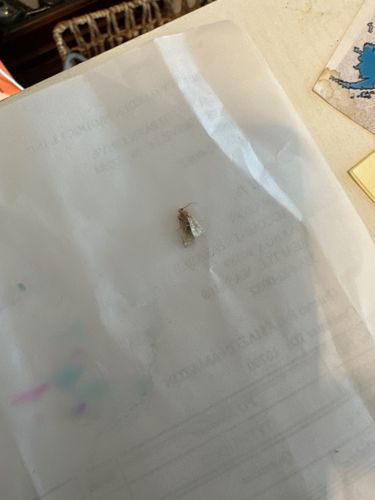Clothes Moth
Scientific Name: Tineola bisselliella (Common Clothes Moth) or Tinea pellionella (Case-bearing Clothes Moth)
Order & Family: Lepidoptera (Order), Tineidae (Family)
Size: Wingspan typically ranges from 9 to 16 mm (0.35 to 0.63 inches).

Natural Habitat
Commonly found indoors, particularly in dark, undisturbed areas where clothing, carpets, upholstered furniture, or stored textiles are present. Also found in attics, closets, and storage chests.
Diet & Feeding
Larvae (caterpillars) feed on natural fibers such as wool, cashmere, silk, fur, feathers, and other animal products containing keratin. Adults do not feed.
Behavior Patterns
Adult moths often emerge from pupae and seek mates for reproduction. They are typically nocturnal and attracted to light. Females lay eggs on suitable food sources for the larvae. The larval stage (caterpillar) is the feeding and growth stage. After reaching full size, the larva pupates, often in a cocoon or protected spot, before metamorphosing into an adult.
Risks & Benefits
Potential risks include significant damage to clothing, carpets, upholstered furniture, and other textile items made from natural fibers, leading to economic loss. They generally pose no direct health risk to humans. There are no known significant benefits to humans or the ecosystem.
Identified on: 8/9/2025